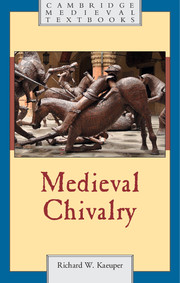Book contents
- Frontmatter
- Dedication
- Contents
- List of figures
- Acknowledgments
- Part I An approach to chivalry: was it real and practical?
- Part II Three broad chronological phases
- Part III The privileged practice of violence
- Part IV Chivalry, governing institutions, and ideals
- Part V The world of chivalric emotions
- 10 Love and amity, men and women
- 11 Anger, wrath, fear, thirst for vengeance
- Reflections
- Select Bibliography
- Index
10 - Love and amity, men and women
from Part V - The world of chivalric emotions
Published online by Cambridge University Press: 05 August 2016
- Frontmatter
- Dedication
- Contents
- List of figures
- Acknowledgments
- Part I An approach to chivalry: was it real and practical?
- Part II Three broad chronological phases
- Part III The privileged practice of violence
- Part IV Chivalry, governing institutions, and ideals
- Part V The world of chivalric emotions
- 10 Love and amity, men and women
- 11 Anger, wrath, fear, thirst for vengeance
- Reflections
- Select Bibliography
- Index
Summary
As one of the grand words spoken or written in medieval Latin and the various vernacular languages, love was wide-ranging in its implications and powerful in its use and impact (Figure 12). R. W. Southern argued eloquently that love between humanity and God came to a new level of understanding and emphasis in the long twelfth century, and even a focus on purely human relationships involving the chivalrous reveals an impressive range of meanings. As so often, the Song of Roland provides perspective. A furious Ganelon, thinking he has been betrayed by his nephew Roland, responds by saying publicly and in deadly earnest that he does not love him and will take revenge, the love that is lost here conveying crucial bonds of loyalty that have been broken and bonds of kinship now severed. William Marshal, dying slowly and almost operatically, calls his wife to his bedside, addresses her fondly as “ami,” and kisses her for the last time, his love for her embedded in amorous, conjugal friendship. Lancelot's love for Queen Guinevere, providing a central pivot around which stories of Camelot turn and finally spin out of control, readily comes to mind as a classic account of heterosexual, romantic, passionate attraction, overwhelming in its compulsion, however disastrous its consequences. Richard Lion-Heart and Philip Augustus are reported, early in their careers, to have shown openly that they feel a bond that leaves modern analysts struggling to characterize it adequately and accurately. Even if in all these instances love fails to conquer all, it seems to have captured an impressive range of emotional territory central to chivalry, through the affective life of characters both historical and fictional.
Given the almost crushing weight of scholarship on every aspect of love in the Middle Ages, with strongly held modern interpretive positions laid out like battlefield dispositions beneath banners of accomplished scholars, attempting any necessarily contained discussion of the role of the emotions of love in chivalry may resemble tap-dancing a route through minefields thickly planted within more than one academic department. Yet an overall historical perspective with a focus on the role of love within chivalric ideology and practice allows at least some contentious issues to be left to the care of specialists.
- Type
- Chapter
- Information
- Medieval Chivalry , pp. 321 - 352Publisher: Cambridge University PressPrint publication year: 2016

